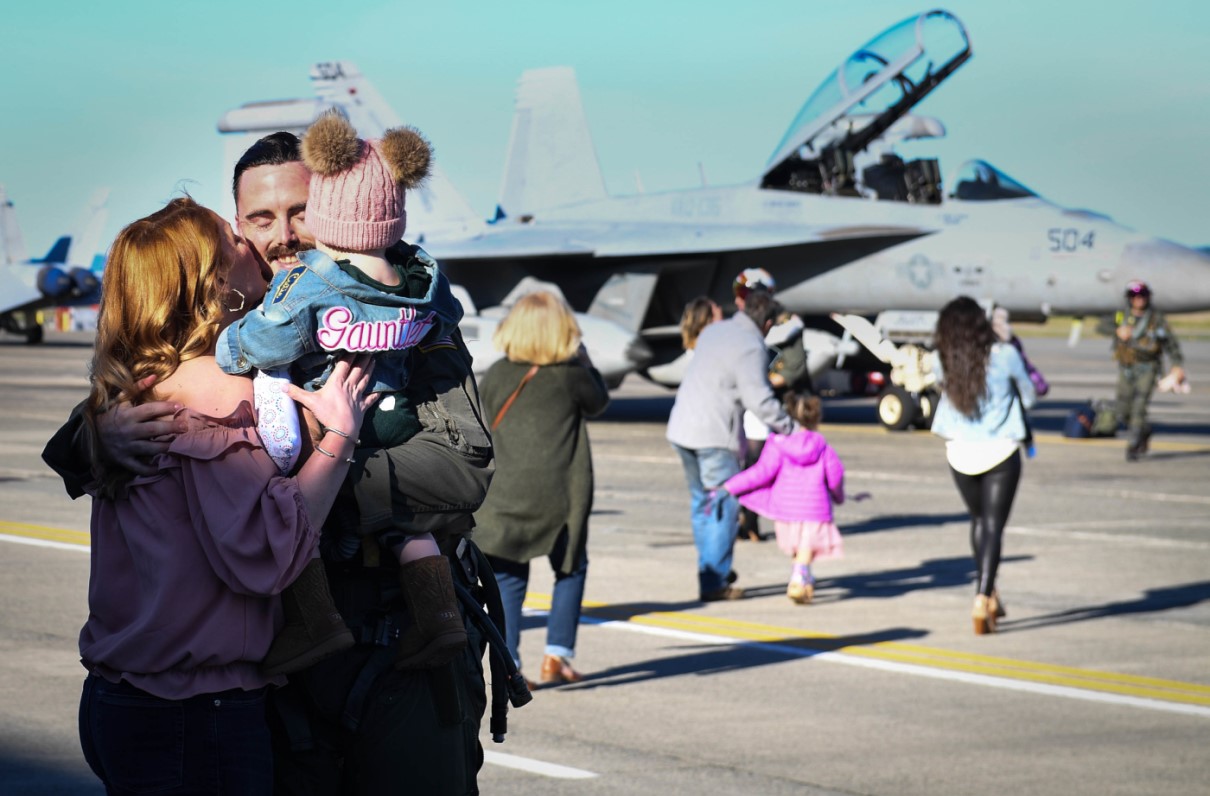Since 2009, Blue Star Families has conducted its annual Military Family Lifestyle Survey to provide a comprehensive understanding of the experiences and challenges encountered by military families, veterans, and caregivers. With over 8,000 respondents worldwide, this is one of the most useful surveys of active duty, National Guard, and Reserve servicemembers, and their families.
The 2021 survey reveals the top issues affecting military families, including:
- Amount of time away from family – 38% of active duty spouses and 36% of active duty servicemembers highlighted this issue, as did 42% of National Guard families and 41% of Reserve families.
- Impacts of military service on the family. These include:
- Spouse employment – 47% of active duty spouses cited employment concerns as their No. 1 issue.
- Child care – 25% of active duty servicemembers and 20% of active duty spouses noted access and availability issues combined, particularly for children with special needs.
- Children’s education – nearly 1,500 respondents cited a lack of consistency exacerbated by the pandemic and challenges faced by families who choose homeschooling.
- Behavioral health care – 20% of active duty spouses indicated concern with access to mental health resources and services, for themselves or their children.
- Housing costs – 76% of those who reported out-of-pocket housing costs are paying $200 or more each month.
- Increased activations and deployments of Reserve and National Guard servicemembers – 34% of National Guard and Reserve families cited this issue as a stressor.
While these aren’t new challenges, they intensified during and after the unprecedented events of 2020. Child care facilities and schools shut down or reduced their hours or capacity, yet deployments – especially for medical providers – increased. This forced many employed spouses to leave the workforce.
[RELATED: Program to Help Military Families Pay for In-Home Child Care Off to a Slow Start]
The world is returning to some level of normalcy with expanded remote options and flexible work arrangements, but military spouses still face persistent obstacles such as relocation and the lack of accessible child care as they seek or try to maintain employment. The survey reveals 34% of active duty spouse respondents are unemployed but want or need to work, yet say child care is too expensive or doesn’t meet their needs.
Spouses need flexibility, career portability, and the ability to minimize child care costs. Entrepreneurship is an attractive option, but a lack of consistency in rules and regulations between installations and across service branches keeps spouses with entrepreneurial interests from capitalizing on this ideal line of work.
[TAKE ACTION: Ask Your Lawmakers to Support the Jobs and Childcare for Military Families Act]
Military children’s education has remained a top concern for active duty families since 2018. Frequent moves impact a child’s sense of belonging and ability to thrive in a school environment. While 52% of active duty family respondents with an adolescent who has attended four or fewer schools believe their child feels a sense of belonging to their current school, that number drops to 36% when the teen has attended five or more schools.
Enhanced awareness of education support programs and resources, such as the School Liaison Officer (SLO) program and the Interstate Compact on Educational Opportunity for Military Children, is needed to improve school transition experiences.
Military families often opt for homeschooling (13% of active duty family respondents) to stabilize the academic experience, provide flexibility for family time, and avoid low-quality school options. But these families face challenges adhering to different state education requirements after each PCS move.
Lack of mental health resources and services is a nationwide problem, but the impacts of military life add stressors beyond the norm. Access to care has been a consistent challenge for military families seeking mental health treatment for themselves or their children, especially for those in rural or remote areas with minimal medical/mental health services. Nearly one-third of active duty family respondents rate behavioral health in their community as inadequate, with almost half (44%) of TRICARE beneficiaries reporting difficulty getting mental health care treatment for their children.
[ADVOCACY IN ACTION: TRICARE Mental Health Cost Among MOAA’s 3 Areas of Focus]
Military families making PCS moves face long housing waitlists, unaffordable civilian housing markets, and expensive rental costs. While the temporary increase in the basic housing allowance (BAH) authorized by DoD in December 2021 helped, the lack of a more flexible BAH calculation method to anticipate or adjust to future market fluctuations indicates this issue will persist if not addressed.
National Guard and Reserve families (63% and 54%, respectively) report at least one military-connected separation lasting a month or longer in the past 18 months and highlight the increased operational tempo as “stressful” or “very stressful.” While a high rate of these families report satisfaction with their civilian job, proportionally fewer report satisfaction with career advancement opportunities, which has lasting impact on wage growth and retirement savings.
Solution-Based Recommendations
Addressing these issues requires action from various stakeholders: military, Congress, and community supporters. For military leaders, the survey’s authors recommend:
- Commissioning a report on families with children with special needs and their barriers to accessing child care. Include plans for hiring and training qualified providers, and for making child development centers (CDCs) accessible to children with special needs.
- Standardizing policies across service branches to support military spouse entrepreneurs who live in installation housing.
- Exploring options for improved BAH calculation, taking into consideration issues such as school district quality, housing availability, market fluctuations, and more.
- Diversifying communication methods used by National Guard and Reserve commands to connect with, and get feedback from, military families. Communication should focus on eligibility for available resources and services, and on access to those programs.
- Establishing and/or supporting affinity groups at installations, especially in less-diverse areas and areas with documented incidents of discriminatory and/or racist behaviors.
For lawmakers at the state or federal level, the survey recommends:
- Commissioning a report to assess the viability of flexible work options for servicemembers and making leave opportunities more flexible to address short-notice and short-duration personal and family concerns.
- Increasing access to crucial mental health care by enacting interstate compacts which allow practice via telehealth and provider license acceptance across state lines.
- Allowing homeschooling military families to utilize their “home state of record” instead of their current residence for homeschooling education requirements to maintain continuity.
MOAA actively supports Blue Star Families’ efforts to collect and compile this important data which enhances our advocacy efforts to improve the quality of life for military families.
Every Officer Has Two Families
For over 90 years, MOAA has been working to get servicemembers and their families the benefits they deserve.

